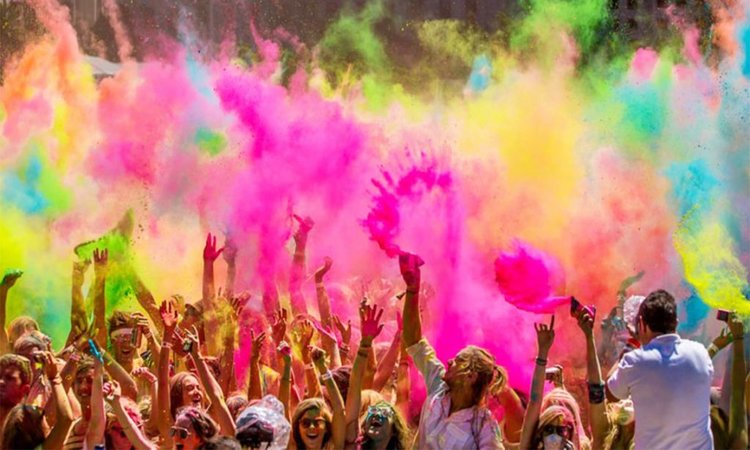Holi, the festival of colors, is a celebration that transcends mere festivity. It is a reminder of life’s vibrancy, the renewal of nature, and, most importantly, the power of unity, forgiveness, and love. Traditionally observed in India and other parts of South Asia, Holi has transcended its cultural and religious origins to become a global phenomenon. It is a time when people set aside their differences and immerse themselves in a sea of colors, laughter, and joy.
But in the contemporary digital age, the message of Holi carries even greater significance. While technological advancements have made it easier than ever to connect with people across the globe, they have also created barriers—sowing discord, division, and a sense of isolation. Social media, often praised for its ability to bridge distances, has also become a battleground where political ideologies clash, friendships fracture over trivial disagreements, and misinformation spreads like wildfire. Amidst all this, the true spirit of Holi calls upon us to remember the values of compassion, empathy, and unity—virtues desperately needed in these tumultuous times.
Holi’s origins are deeply rooted in Indian mythology, particularly in the legend of Prahlad and Holika. Prahlad, a devoted follower of Lord Vishnu, stood strong in his faith despite the relentless opposition of his father, the demon king Hiranyakashipu. The tyrant, who had gained near invincibility through a boon, sought to be worshipped as a god, but his own son refused to obey him, remaining loyal to Lord Vishnu. Enraged, Hiranyakashipu subjected Prahlad to various tortures, but the boy’s unwavering devotion protected him. In a final attempt, the king’s sister, Holika, who was immune to fire, was instructed to sit in flames with Prahlad on her lap. However, as the legend goes, divine intervention ensured that Prahlad survived unharmed, while Holika perished in the fire. This story underscores the triumph of righteousness over arrogance and tyranny.
If we reflect on this ancient tale in the context of today’s world, its relevance becomes even clearer. The world is witnessing divisions on multiple fronts—social, political, economic, and cultural. The internet, which was meant to connect people across the globe, is often misused to spread disinformation, hatred, and prejudice. Social media platforms, once hailed as tools of democracy and free speech, are increasingly becoming platforms for hostility, cyberbullying, and manipulation. The result is an erosion of trust, a rise in misinformation, and a society that struggles to engage in healthy and constructive discourse.
In this era of misinformation, the lesson from Holi is evident—truth and righteousness will always prevail over falsehood. Just as the fire of Holika’s own deceit consumed her while sparing the innocent Prahlad, today’s world must recognize the necessity of honesty, integrity, and genuine connections over fear-mongering and divisive narratives. The festival reminds us that, no matter how dark the times, truth will always burn through the clouds of deception and guide us towards clarity and unity.
Beyond truth, Holi is an emblem of forgiveness and reconciliation. The very act of applying color to one another is deeply symbolic—it is an unspoken apology, an unreserved acceptance of differences, and a promise to move forward without grudges. In a world where relationships are often marred by misunderstandings and resentments, this act of coming together, of forgiving and moving forward, is a powerful and much-needed message.
Imagine if we could bring the spirit of Holi into our daily lives, both online and offline. What if, instead of responding to opposing views with hostility, we could paint our words with the colors of understanding? What if we could replace prejudice with genuine curiosity about other cultures, opinions, and beliefs? What if, instead of holding onto anger, we could learn to forgive as we do during Holi, washing away past grievances and starting afresh?
This is the challenge that Holi presents to us in the digital age—to not only celebrate unity in our streets but also to practice it in our interactions, both online and offline. While the internet has made us more connected than ever, it has paradoxically deepened our divisions. Instead of engaging in meaningful conversations, we often find ourselves in ideological battles where winning seems to matter more than understanding. Holi, however, offers a different perspective—one where unity and compassion take precedence over ego and division.
The festival also serves as a call for self-reflection and renewal. Just as the seasons transition and the world undergoes transformation, so too must we shed our prejudices, anger, and past grievances. Holding onto negativity only darkens our perspective, making it harder to see the beauty in diversity. The splashes of color that cover people during Holi can be a metaphor for opening our hearts to different perspectives, for embracing change, and for recognizing that every person carries a unique hue that contributes to the broader canvas of life.
In today’s digital age, this message is more urgent than ever. The constant barrage of information, opinions, and arguments we face online can often be overwhelming. The distance provided by screens makes it easier for people to dehumanize each other, to engage in verbal battles without recognizing the real person on the other side. The anonymity of the digital world often breeds hate, division, and echo chambers that reinforce our existing biases rather than breaking them down.
But Holi is the very antithesis of this digital toxicity. It is a festival that invites people to be present with one another, to touch, to see, and to feel. The colors do not allow distinctions to be made between social classes, political ideologies, religions, or backgrounds. Everyone partakes in the same chaotic, jubilant outpouring of emotion. It is an opportunity to recognize our shared humanity in its purest form, unburdened by prejudices.
In the face of an increasingly fragmented world, the call of Holi is clear. It reminds us to let go of old grudges, to seek harmony, and to foster compassion. It tells us that colors are beautiful only when they are mixed, that love is stronger than hate, and that, at the end of the day, we are all part of a larger human family.
This Holi, let us not just color our clothes and our faces, but let us color our world with kindness, empathy, and unity. Let this festival be more than a day of celebration—let it be a renewed pledge to bring light to the darkness, to mend broken relationships, to replace hate with understanding, and to build bridges instead of walls. Only then can the true essence of Holi be realized, not just in our homes and streets, but in the very fabric of the world we share.
(Author is RK Columnist and can be reached at: [email protected])








